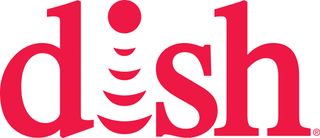Spectrum Worries Hit Dish’s Stock

As the deadline to build its wireless network looms, Dish Network is getting the cold shoulder from Wall Street.
MoffettNathanson principal and senior analyst Craig Moffett slapped a “sell” rating on the stock and warned investors that the fail-safe for any network construction problems — the potential sale of its spectrum — has faded.
Moffett downgraded Dish to sell on Aug. 13, reducing his 12-month price target on the stock to $29 per share, just days after improved subscriber metrics boosted shares by 20%. After a dip, the stock has risen slightly, closing at $35.35 on Aug. 16. “Dish’s equity value is all in its spectrum, and there, the story has gotten worse,” Moffett wrote in a note to clients.
Use It or Lose It
Dish has been accumulating wireless spectrum for about seven years — its first buy was in 2011. While that has helped its stock price over time, the fact that the satellite giant is nearing federally imposed deadlines to start building a network to utilize (or lose) those wireless licenses is starting to put pressure on the shares. Dish stock, down 17.6% in 2017, is down another 26.1% this year, despite the recent gains.
Still, many analysts warn that Dish chairman Charlie Ergen shouldn’t be counted out just yet, as he’s come out on the better end of bigger scrapes before.

Ergen has done a “masterful job over the last five years of milking what is clearly a declining core satellite TV business (and smartly putting effectively all of his debt on the DBS business, leaving the parent debt-free in a worst-case DBS scenario) into attractive massive spectrum holdings acquired at substantial discount to the market,” Pivotal Research Group CEO and senior media & communications analyst Jeff Wlodarczak wrote in a note to clients.
Multichannel Newsletter
The smarter way to stay on top of the multichannel video marketplace. Sign up below.
But so much of Dish’s value has been placed in its spectrum holdings — Ergen himself has called satellite TV a declining business for years, and launched Sling TV (the largest in the OTT space) in 2015 to prove it — that any hiccups in the wireless business can send investors into a panic.
Part of the problem is that in the past, if the network build didn’t work out, investors could rely on a spectrum sale to make everything better. Now even that avenue appears to be closing.
Moffett contends that with a March 2020 deadline to reach 70% of its licensed footprint with a new wireless network, no buyer could complete the regulatory approval process and still come under the deadline. Whether Dish ever had intended to sell the spectrum — Ergen said in an earnings call earlier this month that he never said publicly he wanted to sell it — that option appears to be off the table.
That leaves building out the network. And though Dish said that process has begun and it fully expects to meet the March 2020 deadline, it’s not the March 2020 deadline Moffett is worried most about — that should cost about $1 billion. It’s the second stage, a wideband 5G network that could have a $10 billion price tag, that gives the analyst the shivers.
Adding to the pressure is Dish’s debt structure. Dish can easily meet its debt obligations of between $1 billion and $2 billion over the next two years with its existing free cash flow, Moffett said. But the picture changes in 2024, when $5 billion in debt matures. With free cash flow expected, by Moffett’s estimates, to shrink from $1.1 billion in 2018 to negative $237 million by 2022, it could be difficult for Dish to pay its debt.
That FCF decline isn’t a total given. Moffett wrote that the satellite unit’s rate of descent could be slowed as its subscriber base reaches a level of stickier, more loyal customers, which appears to have helped lessen losses in Q2.
Moody’s Investors Service senior vice president, senior analyst Neil Begley said while the mysteries around what Dish will do with its spectrum are many, the satellite company does have several options. But to Begley, the key to Dish’s overall strategy is finding a deep-pocketed partner to finance phase two of the wireless network
With a narrowband Internet of Things network in place (phase one), the more robust 5G phase two offering could attract potential investors from Silicon Valley, the automotive industry, private equity and more, Begley said.
“IoT, once they get it off the ground and it becomes operable, there will be a line at the door,” Begley said. “But between here and when it’s built, there’s a lot of uncertainty. He [Ergen] needs to do something”
Ergen: I Have a Plan
For his part, Ergen is aware that Dish has to take action. In its Q2 conference call with analysts, he shed more light on his strategy toward 5G, adding that the satellite giant has raised more than two-thirds of the capital needed for phase one. He likened Dish’s current situation to the early days, when it was seeking partners to launch satellites for its TV business, adding that in the end, it all boils down to the validity of its business plan.
“There isn’t an industry in the next decade that doesn’t need what we’re going to build,” Ergen said, adding that tens of billions of dollars is being invested in technologies like self-driving vehicles, health care and artificial intelligence that will need access to an IoT network. “You’ve got have a good business plan. And we’re going to have a good business plan.”
